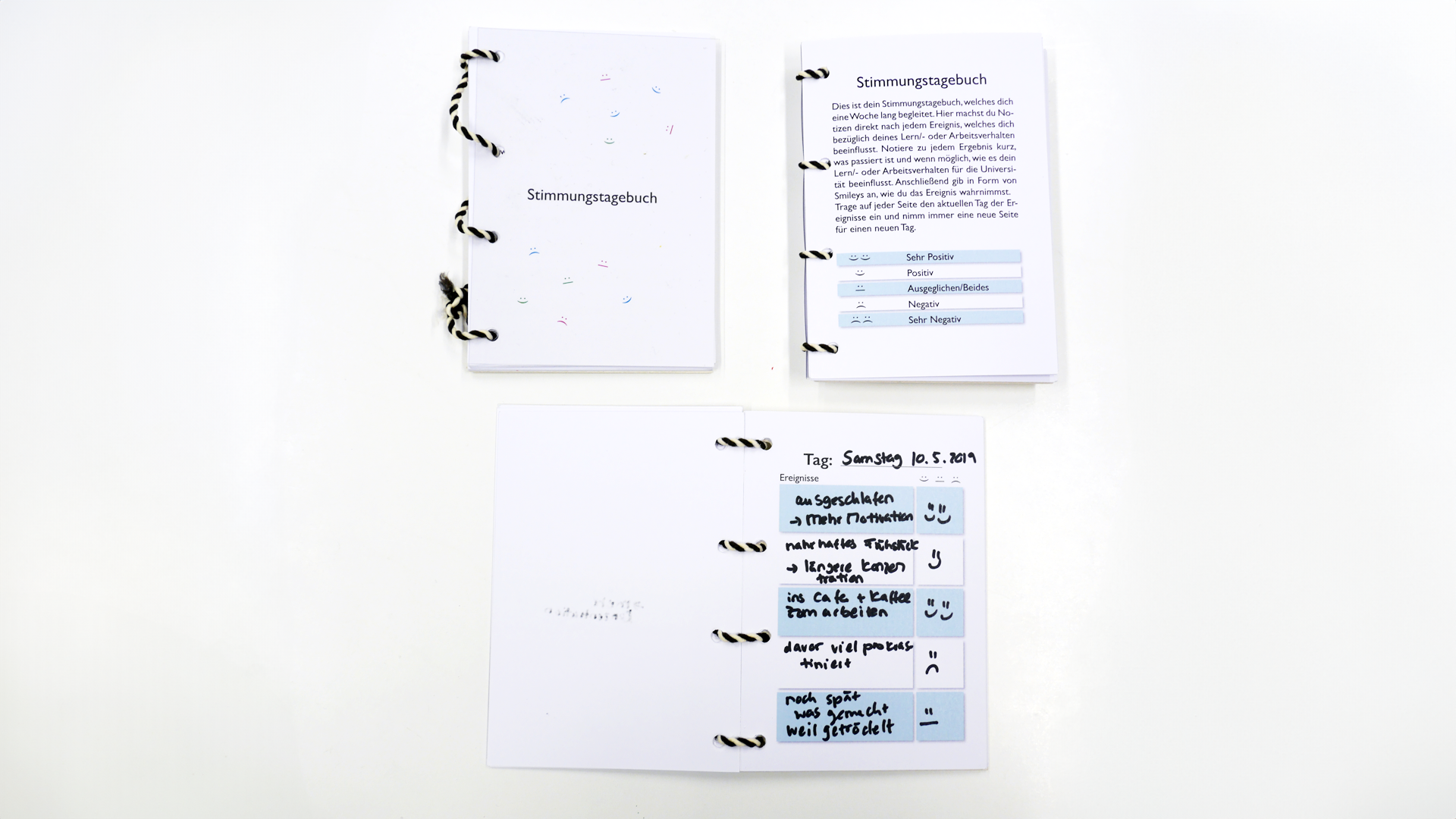
Cultural Probes
2019 · BA Participatory Design Method 6. Semester
Research
In the course "Methods of participatory software development" at the University of Bremen, we were introduced to different methods and their origins in scientific publications that we can use them for our project. Our group wanted to investigate the learning and working process of students at the university to develop an app supporting them. The method that I used to engage in a more intensive exchange was Cultural Probes. Since this method took place at the beginning of our project, it had the task of gaining first impressions and opening up the field of research. I was the leader of that task so i researched relevant scientific background and prepared a presentation. Within the working group we developed ideas for Cultural Probes together and came up with four approaches of Cultural Probes. Afterwards I designed the Cultural Probes and handed them out to three students at the university. The Probes were all designed in a way that allowed the students to fill them in but they did not have to if it was too uncomfortable.

The emotion diary helped to find out which factors are influencing students‘ learning and working experience for their studies. Therefore every participant has kept the emotion diary for one week.The participants made a note for each event that influenced them in their learning or working. A note always explains briefly what happened in that moment and what effect it has on it. For each note, each participant indicates in the form of smileys how they feel this effect.

The distraction block is intended to show how and for how long students take their mind off working on their studies. For this purpose the participants have received a block with sheets in five different colours and a cardboard bag for one week. Each colour stands for a distraction category: electronic devices, communicating with people, creative e.g. drawing, thoughts, working on something else. Every time a participant gets distracted while learning and notices it, he/she tears off a piece of coloured paper according to the distraction category. The size of the piece of paper corresponds to how long the participant has felt distracted. Afterwards the piece of paper is put into the paper bag, so that after the week all pieces of paper remain available.

The stress postcards describe stress factors and their influence on students in relation to their studies. For this purpose the participants received five postcards each on which one stress factor was processed. Each postcard consist of three parts. First, students describes the stress factor on the back. Then a number between one and five was entered into the stamp field. This number stands for the degree of the stress factor, one meaning only slightly stressful and five extremely stressful. Finally, a metaphor for this stress factor was written on the front side in the form of a drawing or words to illustrate the stress factor.

The campus map shows where the students are on the university campus and what they are doing there. Therefore every participant got a map of the campus and stickers in four different colours. Each colour represents one type of activity: working extracuricullar, learning for university, leisure or break, in a university class. So the stickers were stuck on the map where the participants stay longer and the colour was used according to the activity. Afterwards a number between one and five was written on each sticker, which describes how often the participants stay at the place, five means very often and one less often.